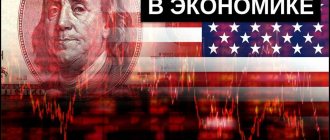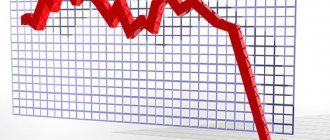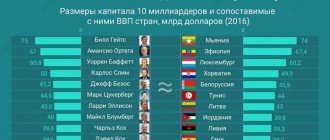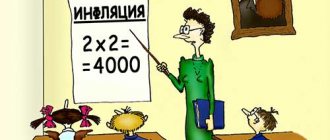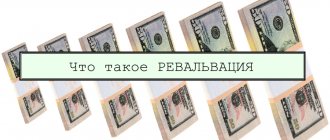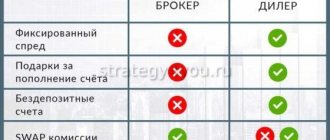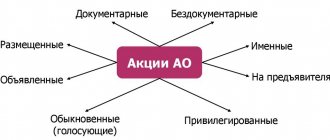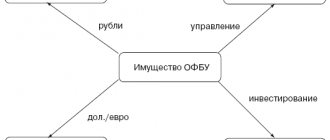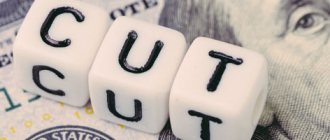Recently, questions regarding the state of the economy and the various concepts that characterize it are especially relevant.
In general, what term to call this or that state is a very controversial issue.
For example, Murray Rothbard, a libertarian economist and creator of the idea of anarcho-capitalism, wrote back in 1969 that depression, “slowdown,” recession and economic decline are the same thing, called different words for ideological reasons.
He may be partly right, but in modern economics the difference between these concepts can still be traced. Before finding out how a recession differs from stagnation, it is necessary to understand the essence and features of these processes.
What is stagnation?
Stagnation is (in economics) long-term stagnation. It is expressed in a high level of unemployment, zero or low rates of GDP growth, and a general decline in living standards.
The structure of the economy during its period remains unchanged, and there are also no changes in the field of scientific and technological progress, because it simply does not perceive innovations. Stagnation accompanied by a high degree of inflation is called stagflation. There are no exact digital indicators that characterize the period of stagnation, but low economic growth rates, indicating its onset, traditionally mean GDP growth of less than two to three percent per year for several years in a row.
It is necessary to distinguish between stagnation and an economic crisis - a shock, sharp reduction in the level of GDP. Stagnation is almost imperceptible GDP growth or its absence, but not a strong drop in indicators.
The first theory of stagnation was developed in the 30s of the previous century by the American economist Alvin Hansen.
It was he who introduced the concept of “secular stagnation” to describe the situation in America.
The scientist believed that the US economy at that time had exhausted all growth factors, and in the future it would not be able to get out of stagnation on its own.
To restore growth, in his opinion, it was necessary to increase government spending and allow a high level of budget deficit.
Hansen’s assumptions, as we know, were not confirmed: the economy of the above-mentioned country began to grow already in 1940, and his ideas were forgotten for a while.
IMPACT OF ECONOMIC CRISES ON STOCK MARKET AND FOREX MARKET INSTRUMENTS:
We can talk for a long time about why this happens, about the nature of cycles. About how to survive these cycles with minimal consequences, what should be used: reasonable monetary policy, monetary incentives, etc.
But you and I are primarily interested in the impact of crises in the stock market and currencies:
— Currencies:
1) First of all, it is necessary to determine whether the economy is export- or import-oriented. If a crisis occurs, then a state with an export-oriented economy is forced to maintain a lower level of its own currency to stimulate export potential (and vice versa);
2) It is also necessary to consider the structure of the economy: if the economy is based on raw materials, then it is necessary to take into account which product is exported the most (Russia - oil, gas, Canada - oil, Australia - mineral resources, etc.): as a rule, graphs of national currency exchange rates strongly correlate with the exchange rates of exported raw materials.
An example of the dependence of the ruble on oil:
As you can see in the graph, the relationship is inverse and quite stable. Many traders build their strategies based on this dependence. In some countries, the dependence of the local currency on the prices of export goods is very strong, we repeat: Russia - oil, gas, Canada - oil, Australia - iron. ore, gold, Chile - copper, Ethiopia - tea, etc.
3) It is necessary to take into account which group the country is in (groups: developed or developing economies, as well as protective and non-defensive currencies).
For example, the currencies of the United States and the Japanese yen (USD/JPY pair) are considered, as a rule, to be defensive, which means that during crises, many investors switch from the currencies of the group of developing countries to the currencies of the groups of developed and protective currencies;
4) And the last thing that is important to note is the actions of central banks during crises. Their decisions are an extremely strong trigger in the behavior of the local currency. It is impossible to give any universal advice on how to predict and prepare for their decisions, because... There are a lot of factors influencing decisions on bets (keep your nose to the wind and read more analytics from serious investment houses.).
- Industrial goods:
Everything is simple here. As a rule, the cost of all goods during crises falls and falls very strongly (take this as a rule), because... economies are shrinking and don't need as many goods. The exception is gold and silver, because... they are protective assets (there is an inverse correlation between the group of protective goods and other goods).
Copper price chart (note how its value fell during the 2008 crisis, about 60%...!!!)
— Company shares:
Everything here is individual, and it is necessary to study each company separately (is it export- or import-oriented, does it work only in the domestic market, is it a monopolist or not, is the business cyclical and according to other criteria...)
Only when you have conducted a sufficient analysis of the company in all respects and, at least roughly, understand its fundamental value and future prospects, only then make a purchase.
What is a recession?
A recession is a phase of the economic cycle, which is characterized by a slight but steady deterioration in economic performance, primarily a decrease in GDP.
During its period, investment in fixed capital also decreases, unemployment rises, and the standard of living of the population, in particular those who receive income from business or wages, decreases slightly.
In some countries, the so-called government authorities make an official announcement about the onset of a recession.
For example, in the United States, the Business Cycle Committee of the National Bureau of Economic Research classifies it as a rapid decline in business activity in the economy over several months, which is reflected in a decrease in GDP, income, employment, retail trade and industrial production.
In the UK, a recession is defined by the National Statistical Office if GDP declines for 2 consecutive quarters.
LET'S LOOK AT ALL THESE CYCLES IN GRAPHS WITH EXAMPLES:
- first in an ideal economy:
— in real economic conditions:
Not surprisingly, things are different in real life. All economic news contains the concept of GDP. Let's look at US GDP data from 2006 to 2022.
If we connect all the points at the maximums of the histogram, we get the curve of economic cycles in the United States. Now let’s try to find the cycles described above on the chart:
Stagflation. In the graph you can see the period between 2012 and 2014, when the GDP growth rate was close to zero; such a period clearly could have led to long-term stagnation if a balanced economic policy had not been pursued;
Recession. On the histogram you can find several periods of GDP decline for more than two quarters in a row. The biggest recession that could have led to a depression in the future was the one in 2008, but it didn't happen;
Depression. During this period she was not there.
Interesting fact from the author
A well-known paradox is closely connected with the definition of a recession: since usually in developed countries information on quarterly changes in GDP is published with a delay, and then can be completely revised, an official statement regarding its occurrence often comes literally a couple of months after its completion.
When a recession is declared, two scenarios are possible:
- the country's economy is in a state of severe crisis;
- it is on the rise.
Thus, much of the official recession data is of historical interest. So forecasting GDP fluctuations is of considerable importance in the government’s economic decision-making.
It is also worth mentioning that in economic science today there is no consensus regarding the reasons for its occurrence, as well as methods for quickly overcoming it.
Causes and consequences of recession
Many internal and external factors lead to the development of such a situation. When wondering what stagnation and recession are, a person must understand their development mechanism. If GDP not only does not grow, but also declines steadily, the economy may be entering a recession.
The reason for this may be a sharp increase in production in the previous period. Having exhausted its capabilities, the economic system will inevitably come to the need to reduce production. Sometimes this situation is caused by external factors, wars, international conflicts.
An increase in prices for raw materials on the world market can also reduce GDP growth. A recession can be caused by uncertain, weak investments or a high level of distrust of buyers and capital owners in the industry and production products. If the government does not take any action to improve the situation, an economic depression and crisis will occur.
Varieties
Economists distinguish several types of recessions - in accordance with the shape of the GDP fluctuation graph.
- V - recession is characterized by a rapid and strong drop in GDP (which, however, does not reach the level of depression) with a pronounced single failure, as well as a further recovery to the original level.
- U - characterized by a fairly stable and long stay of GDP at an unsatisfactorily low level with further recovery.
- During W - there is a short-term increase in the GDP growth graph in the middle - it resembles two V -recessions in a row.
- L means a rapid decline in GDP followed by a smooth and long recovery .
Recession is a common phenomenon for the economies of developed countries. In America after World War II, there were more than 10 recessions, in Great Britain - at least 5. With the growth of globalization, its global forms began to occur, simultaneously affecting several countries (for example, in 1998, 2000–2001, 2008–2009).
SCENARIOS FOR THE DEVELOPMENT OF ECONOMIC CRISES:
Each crisis is individual and a lot will depend on which scenario it follows. The main indicator here is the dynamics of GDP.
Below we will tell you more about them:
- V -shaped model - a variant of the development of an economic crisis in which there is a rapid and fairly deep decline and an equally rapid recovery from it as a result of the adoption of serious incentive measures, as well as adjustments to monetary policy (Global crisis of 2008);
- W - shaped model - an option in which the emerging growth is replaced by a decline due to various factors, after which full-fledged growth begins in all directions;
- U -shaped model - a crisis scenario in which a strong and deep decline occurs, developing into long-term stagnation, after which growth occurs;
— L -shaped model – deep recession in the economy and subsequent stagnation for a long period of time;
- UUU - shaped model - the crisis develops in waves, successively replacing each other according to the U - shaped model;
— Hysteresis is an option in which the causes that caused the crisis are eliminated and the economy is partially restored.
Diagrams of crisis development scenarios
Key Difference
The onset of a recession means that the economy began to adapt to the new state of affairs by compressing certain types of activity . In this case, using trial and error, a new structure is searched for further development.
Sustained stagnation, in turn, means that adjustment does not occur . In the economic system, the same completely unpromising model is reproduced in a vicious circle. Although both of these phenomena are unfavorable, the answer to the question: “ Which is worse?” " A recession is preferable between two evils, as it indicates some progress in the economy.
11 characteristic reasons for the slowdown in economic processes:
- Falling value of natural resources.
- Unexpected changes in business sectors.
- Reduced income due to inflation.
- Decrease in the volume of foreign investment.
- Monopoly and high taxes.
- Depreciation of savings.
- Transfer of private capital to banks in other countries.
- The impact of international sanctions.
- Introduction of innovative technologies.
- Problems of the credit and financial sector.
- Devaluation.
Often, economic problems in one state cause a recession in others and a global economic crisis.
What does recession and stagnation indicate?
To deeply study the question of what stagnation and recession are, we should also note the general probability of the state of the economy. If the government does not take any action to improve the situation, a phase of depression and crisis begins. Therefore, both of these processes cannot be left to chance.
The government is obliged to clearly monitor the main indicators of the country's economy and immediately take a set of actions to increase production levels. Also, both of these states of the economic cycle indicate mistakes made on the part of the governing bodies (for example, incorrect budget allocation).
Existing constraints require immediate identification and elimination. In this case, all details of the organization of economic activities of the state are taken into account. Only a comprehensive solution to pressing problems and competent production planning gives a positive result. Scientific developments and progress should not be hampered by any factors. This should be monitored by the relevant control authorities.
How to prepare for a recession
It is very difficult to predict when a recession will start and how long it will last. Even analysts and economists make mistakes in their forecasts.
It doesn’t matter when a recession comes - it’s better to be prepared for it at any time: accumulate a financial cushion for at least 3-6 months, have as few loans as possible and, if possible, create several independent sources of income.
If catchy headlines appear in the media that a recession has arrived, it is too late to prepare - you need to act according to the circumstances.
During a recession, income decreases, so it is important to preserve what you have and reduce your debt load. Here's how to do it:
- Refinance your loans.
- Control and reduce costs.
- Get all the tax deductions you can.
- Spend your savings wisely.
Causes
The influence of the international situation. The world's largest economies are Chinese and American. The slowdown in production and consumption in each of these countries affects their partners around the world.
International trade declines during a recession because exports and imports fall. Supply chains are disrupted, leading to the shutdown of production in different countries.
Shocks in the economy. Recessions often occur after shocks to the economy. There were several such shocks in 2022. First, the trade war between the US and China escalated, with both countries raising tariffs on imports and the US even calling China a currency manipulator. At the beginning of 2022, the States nevertheless excluded China from the list of manipulators.
At the same time as trade wars, the United States and China competed for dominance in the high-tech sector. The United States announced that the Chinese threat to the country's national security.
Brent oil prices during 2022 changed from $52 to $75 per barrel. Prices were affected by US-Iran relations, as well as the drone attack in Saudi Arabia.
After the coronavirus epidemic began in China in December 2022, the demand for petroleum products decreased sharply: people began to use transport less. After this, oil prices collapsed - this is a serious shock for world markets.
Problems of the financial market. Some recessions begin with financial market problems, such as credit booms. The 2007 global financial crisis began with a mortgage boom in the United States. Borrowers were not asked for proof of income; loans were given to everyone. Real estate prices were rising. People hoped that they could make money from this, so they bought several houses at once. Private investment banks also wanted to make money, issuing mortgage bonds and risky derivatives.
But in 2006, real estate prices began to fall, and many borrowers stopped paying. The boom in subprime mortgages in the United States led to bank failures and a prolonged global financial crisis.
How to invest and not screw it up
We'll tell you in our weekly newsletter for investors. Subscribe and receive emails every Monday
